- Home
- Mary Wesley
Darling Pol
Darling Pol Read online
Contents
Cover
About the Book
About the Author
List of Illustrations
Dedication
Title Page
Epigraph
Introduction
Part One
Hope: 1944–46
Part Two
The Crisis: 1947–50
Part Three
We Shall Be Rich!: 1950–54
Part Four
The Making of a Writer: 1957–67
Directory of Names
Picture Section
Acknowledgements
Index
Copyright
About the Book
Published here for the first time, this remarkable cache of letters reveals the great love story of Mary Wesley’s life.
‘They met by chance in the Palm Court of the Ritz Hotel on the evening of 26 October 1944. By the time she eventually caught the train back to Penzance two days later they had fallen in love and Eric had declared that he was determined to marry her …’
Before her death in 2002, Mary Wesley told her biographer Patrick Marnham: ‘after I met Eric I never looked at anyone else again. We lived our ups and downs but life was never boring.’ Eric Siepmann was her second husband and their correspondence – lively, intimate, passionate, frustrated – charted their life together (and apart) with unusual candour and spirit.
Marnham suggests that through these letters Mary, who famously blossomed as a novelist in her seventies, a decade after Eric’s death, found her voice. Bequeathed to Marnham in two size-5 shoe boxes, this is one of the great surviving post-war correspondences.
About the Author
MARY WESLEY was born near Windsor in 1912. Although she never passed a school exam, she did attend a politics course at the London School of Economics and during the War she worked in the War Office. She initially fulfilled her parents’ expectations in marrying an aristocrat but caused a family scandal when she divorced him in 1945 and moved in with the great love of her life, ERIC SIEPMANN. The couple married in 1952, once his wife had finally been persuaded to divorce him. Mary published her first novel at seventy and went on to write a further nine bestsellers, including the legendary The Camomile Lawn. Mary Wesley was awarded the CBE in the 1995 New Year’s honour list and died in 2002.
PATRICK MARNHAM was born in Jerusalem, educated at Oxford and was called to the Bar. He is the author of twelve books, has been translated into ten languages, has won the Thomas Cook Travel Book Prize and the Marsh Biography Award, and was nominated for the Edgar Allen Poe Award in 1994. He started his career as a reporter for Private Eye and has contributed to many newspapers including The New York Times and the Washington Post. He has been literary editor of The Spectator, was the first Paris correspondent of the Independent, and has worked as a BBC scriptwriter and broadcaster and as a special correspondent in Central America and the Middle East.
List of Illustrations
1. 1936: a portrait of Mary Farmar, aged twenty-four.
2. 1923: Eric Siepmann, aged twenty, an undergraduate of Corpus Christi College, Oxford.
3. 10 July 1945: a letter from Mary to Eric.
4. 21 September 1958: a letter from Eric to Mary.
5. 12 May 1937: Lord and Lady Swinfen, before the Coronation of George VI.
6. The children who spent the war at Boskenna: Toby, Ann Bailey, Nicky and Roger.
7. Colonel Camborne Paynter and Paul Hill at Boskenna.
8. July 1942: Flying Officer Henry Osbert Zetland, Heinz Ziegler.
9. Group Captain Charles Patrick Green. Daily Telepraph, 17 May 1999.
10. Father Paul Zeigler.
11. Eric Siepmann’s former wife, Phyllis, arriving at the Divorce Court. Evening Standard, 26 July 1951.
12. July 1954: Eric with Billy and Pebble at Broughton.
13. 1952: Toby, Sonya and Mary at Knoll House.
14. Toby, Roger, Mary and Eric at Broughton House.
15. 1959: Mary and Roger kissing goodbye.
16. Mary in Cullaford Cottage. Photograph by Kate Ganz.
17. Cullaford Cottage, Dartmoor.
18. Mary, the bestselling writer. Photograph by Kate Ganz.
19. Mary and Sonya in the 1990s.
Unless otherwise stated, all the photographs are from private collections.
For C
They were dancing a slow waltz now and they never saw me enter, two old people bound in the deep incurable egotism of passion … I called out to her as she went by, ‘Aunt Augusta’, but she didn’t answer to the name; there was no sign that she even heard me. They danced on in their tireless passion into the shadows.
From Travels with my Aunt by Graham Greene, a book that Mary kept on the shelf by her bed.
IN 1983 AN unsuccessful children’s author called Mary Siepmann, by then seventy years old, published her first adult novel under the pen name ‘Mary Wesley’. It was called Jumping the Queue and its heroine was a widow who lived alone in poverty on Dartmoor and was considering suicide. The story was inspired by the situation in which Mary had found herself following the death of her second husband, Eric Siepmann. Over the next twelve years Mary Wesley wrote nine more novels and enjoyed great popular and critical success. Her marriage to Eric had been the happiest relationship of her life, and is catalogued in the long correspondence which is published here for the first time. The letters are the account of a ‘no holds barred’ love story, passionate and uninhibited. But they are also a chronicle of despair on one side and of growing determination on the other, as the balance of responsibility shifts, and disaster nears.
Introduction
THEY MET BY chance in the Palm Court of the Ritz Hotel on the evening of 26 October 1944. Both Mary and Eric were married but the marriages, made or broken by war, were over.
That evening Eric Siepmann was noisy, intrusive and slightly drunk. Mary was with an old friend who was an officer in MI6. They were dining at separate tables, but Eric persuaded a waiter to bombard Mary with notes entreating her to join him in a night-club, which, after dinner, she did.
At the end of the evening Eric accompanied Mary back to her hotel where his efforts to join her in the lift were repulsed by the ‘tiny Swiss night porter’. Next morning, as she checked out early to board a taxi for Paddington Station, he was on the pavement; and by the time she eventually caught the train to Penzance two days later they had fallen in love and Eric had declared that he was determined to marry her.
London in October 1944 was once more a dangerous place. In the last year of the war, the Blitz, which had petered out in the summer of 1941, had returned. This time it was a still more frightening bombardment, by V1 flying bombs and V2 rockets. The V2s struck without warning. The massive explosion, which could be heard miles away, was the first warning of their existence. A single V2 could destroy an entire street and the casualties were once again running into thousands. Over a million Londoners had left the city to avoid the danger, but Mary, true to her contrary nature, continued to come up to London from Cornwall to meet her friends and have a good time.
With victory in sight she knew that her pleasurable wartime was coming to an end. Born Mary Farmar, she had in 1937, at the age of twenty-four, married Carol, the 2nd Baron Swinfen, a wealthy young barrister whose father had been the president of the Court of Appeal. Mary liked Carol but she never loved him. She preferred the company of clever young radicals, one of whom had proposed to her before volunteering to fight in the Spanish Civil War. He was killed in 1938 in the Battle of the Ebro.
Carol was lazy, and quite rich enough to neglect his profession. He was also generous, kind and affectionate. His main disadvantage from Mary’s point of view was his exaggerated sense of decorum. This required him to defer to the wishe
s of Mary’s parents in such matters as where they should live, who should be their son’s godfather and whether Mary should be allowed to model hats for Vogue (permission refused). Since Mary had married to get away from her mother, Carol’s polite but feeble acquiescence infuriated her. In 1938 she had presented her husband with an heir when their son Roger was born, an event which she later described as ‘a near-miracle’ since she and Carol had seldom slept together. The war that came in the following year gave her an opportunity to escape from her husband as well as her mother; at long last she could lead an independent life.
Early in 1940 Mary was recruited into MI5 and put to work tracking Soviet and German radio call signs in an office near St James’s Park. Her hectic social arrangements started in London while she was working for MI5. She said later that she was ashamed of the fact but in truth the war, for young women like her, had been an intensely exciting time. There was the exhilaration of danger and a degree of sexual freedom that would have been unthinkable in time of peace. One of the earliest of her wartime lovers was Heinz Ziegler, an émigré professor of economics who was the son of a Viennese banker established in Prague. Heinz was very worried about his parents who were Jewish and trapped by the Nazi occupation of Czechoslovakia. He spoke a lot about his mother and one night, while they were dining in Soho, Mary decided that she would like to bear his child. By the time the Dunkirk evacuation was at its height in June 1940 she was pregnant, which meant that under wartime regulations, with invasion apparently imminent, she was obliged to leave London. She headed for Boskenna, an old stone manor house in Cornwall, on the cliffs near Land’s End, where her second son, Toby, was born in February 1941.
Boskenna was a lost world with its own rituals and customs. She described it as ‘the house that was to become my home and steal my heart’, and with her children settled in the nursery and her husband at work in London Mary decided to lead a more interesting life. It was during the war years in Cornwall that she earned her nickname of ‘Wild Mary’. Boskenna stood conveniently close to an RAF fighter base, and as she said later, ‘War is very erotic … We thought why the hell shouldn’t we do what we want? … They were all going to be killed … It got to the state where one reached across the pillow in the morning and thought, “Let’s see. Who is it this time?”’
Mary was the youngest child of Colonel Mynors Farmar and Violet Dalby. The Farmars were risk-takers and warriors, a military family with connections at court. In the eighteenth and nineteenth centuries, by waging war with a view to profit, they had acquired land in Ireland, Pennsylvania and Virginia. One Farmar governed Singapore; another – Captain George Farmar RN – promoted Midshipman Horatio Nelson, recaptured the Falkland Islands and went down with his guns blazing in the English Channel after engaging a squadron of French warships. Over the years, the Farmars made and lost several fortunes; they ended up in the late nineteenth century with little money and no land but excellent connections. Mary’s grandfather, Major General William Farmar, served in the Sikh Wars, the Indian Mutiny and the Crimea. Then, in old age, he entrusted his remaining fortune to the family solicitor – who absconded with the lot. This meant that the general did not have enough money to send his youngest son, Mynors, to Eton. But he could still introduce the boy to Queen Victoria. After meeting the Queen, Mynors Farmar was awarded a Queen’s scholarship to Sandhurst. He passed out in time to join the Lancashire Fusiliers, and fight with Kitchener on the Nile.
Mary was born in 1912. She had clear memories of the Great War and recalled her father returning from the trenches towards the end of the conflict looking thinner and more exhausted on each occasion. He fought at Gallipoli, where his battalion suffered a 50 per cent casualty rate on the first day and he was wounded and decorated with the DSO, having been recommended for a VC. Two years later, at Passchendaele, he was wounded again and gassed. He never fully recovered from these wounds and remained a gentle but withdrawn presence throughout Mary’s childhood.
That childhood was dominated by her brother, Hugh, and – particularly – by her sister, Susan, who was bossy and interfering. As the youngest, and a girl, Mary’s education was entrusted to a series of sixteen more or less incompetent foreign governesses, all of whom found her extremely difficult to manage. But they did teach her fluent French and some Italian.
Mary admired her mother, who was snobbish, forthright and brave but who frightened her. As a small child, she trusted only her nanny and her grandmother, who had been born Hyacinthe Wellesley and who was the wife of Sir William Dalby, a famous surgeon. Mary said that her grandmother became her adored one, and that despite her calm exterior ‘she bubbled inside, like I do, like a kettle’. Much of Mary’s childhood was spent in her grandmother’s house in London surrounded by pet dogs, guinea pigs, a goldfish and a caged canary.
After the First World War her father remained in the army and was posted to India. Her mother and sister accompanied him and she was left behind at a boarding school where her education continued to be largely neglected. She also spent the holidays at the school and did not see her family again for two years.
Mary first discovered Boskenna though her friendship with Betty Paynter, a young woman of her own age who had invited her to stay before the war. Many years later Mary described her friend as ‘funny, a pathological liar, extremely dishonest about money, a very loyal friend, the first person I would choose to have with me in a tight corner’.
Boskenna had been in the Paynter family for 250 years and Betty lived there with her eccentric father. When Mary first visited, Colonel Camborne Paynter employed twenty-three servants and owned two thousand acres and ten farms; his property took in Lamorna Cove, the adopted home of a colony of artists including Alfred Munnings and Laura Knight. The colonel kept open house for Betty’s friends, and for his own amusement would invite 'dancing girls' down from the London music halls to spend the weekend. He was a law unto himself and once reported Betty for dangerous driving after she had crashed her car into his on a narrow bend in West Cornwall. Since he was the chairman of the bench and heard the case in person he was able to impose a lengthy driving ban. The colonel was a merry widower and a generous host. He sometimes rented out his cottages on original terms; bridge players were preferred, Roman Catholics were not. During the war he ran the local black market in petrol and food, and smuggled daffodils up to London.
In 1937 Betty married a Danish aristocrat. Mary was her brides-maid and after that she became a great favourite of the colonel. When Mary arrived in the autumn of 1940, pregnant and with two-year-old Roger in tow, he was delighted. The Blitz was under way and refugee children had started to crowd into the house.
By chance, Betty was also pregnant. She had met an attractive young Russian in Paris, her Danish husband having disappeared into the fog of war. The two babies – Toby, and Sonya – were born within months of each other. Quite soon the nursery at Boskenna, run by Alice Grenfell, the colonel’s housemaid, was joined by a fourth child, Nicky, the infant daughter of Diana Blackwood, another fun-loving mother.
The young mothers came and went, sometimes to London, sometimes to Penzance or the nearby RAF fighter base. Years later Nicky Blackwood recalled Mary and her own mother making rare appearances at Boskenna, ‘looking mysteriously glamorous … swathed in mink and in a hurry’. For the children of the nursery, running wild on the cliffs and farms and beaches of West Cornwall, Boskenna was a paradise.
Looking back in old age, one of Mary’s RAF pilots wrote: ‘Boskenna needs a book … the path through the hydrangeas to the sea, the haunted wood … and drinking in The First and Last at Land’s End at Christmas …’ …’. In Mary’s words, ‘War freed us. We felt if we didn’t do it now, we might never get another chance.’ Another Battle of Britain veteran, Wing Commander Pat Hancock DFC, remembered Mary at Boskenna during the war: ‘She was a very, very pretty girl with raven black hair and a deep laugh. She and Betty used to hunt in pairs. They were deadly.’ For the fighter pilots a few days and nights at Boskenna we
re a precious resource. They sometimes confessed to being ‘scared witless, before going back into battle. One woke up at night screaming and punching the air, and Mary would have to bail out of the bed to avoid getting a black eye.
Then in October 1943 things started going wrong. The national press printed a ‘black market scandal’ story beneath the headline ‘LADY SWINFEN BUYING CLOTHING COUPONS FROM HER MAID’. This was entirely Betty’s fault. She was the one who had been buying the clothing coupons, and Mary was eventually acquitted of any offence. But the misleading publicity ensured that the damage to her reputation had been done. As far as her conventional family were concerned, Mary was out of control.
Next, in May 1944, Mary heard that Heinz Ziegler was dead. Heinz had left a safe job working as an interpreter with a Czech RAF squadron to join Bomber Command. The professor of economics had retrained as a rear gunner; his Wellington was shot down over Budapest. He and Mary had made plans to move to Prague after the war with Roger and Toby. She had been asking Carol for a divorce since the autumn of 1942 and he had finally agreed. Carol had always accepted Toby as his son but Mary was nonetheless dreading the family scandal that was bound to erupt when her divorce was made public, and now, with Heinz’s death, she was faced with a solitary future without any means of support. She thought of applying for a peacetime job with MI5, but then another setback occurred.
In September 1944, Mary was invited to lunch in London with a former lover, Raymond Lee, who was in the French section of SOE (Special Operations Executive). Also at the lunch was ‘a tall Czech’ who asked her if she would help him to get locked up in ‘a nice English prison’. The Czech explained that he was a fugitive from the post-occupation purge of collaborators in Paris and was anxious to avoid French justice. Lunch turned into drinks and then dinner; Raymond Lee admitted that he had rescued the Czech in Paris, escorted him back to England and then tried to get him onto a boat to South America rather than turning him in. Eventually Mary called a friend in MI6 who arranged for the fugitive to be arrested that night. The Czech (who was actually Austrian) was later tried for war crimes in Germany and received a life sentence, and Raymond Lee – who had an outstanding war record – was cashiered and deported.

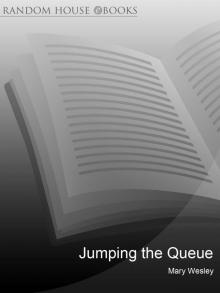 Jumping the Queue
Jumping the Queue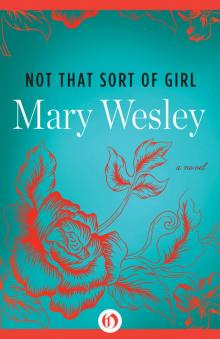 Not That Sort of Girl
Not That Sort of Girl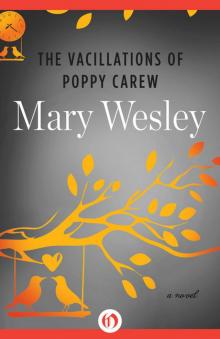 Vacillations of Poppy Carew
Vacillations of Poppy Carew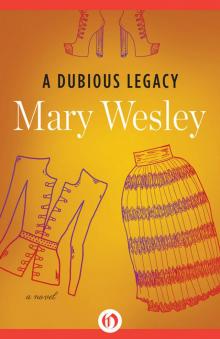 Dubious Legacy
Dubious Legacy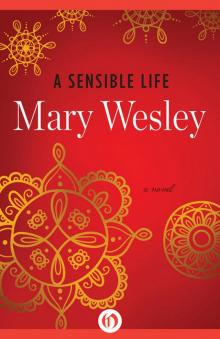 Sensible Life
Sensible Life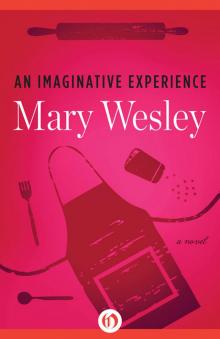 Imaginative Experience
Imaginative Experience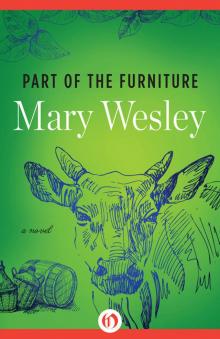 Part of the Furniture
Part of the Furniture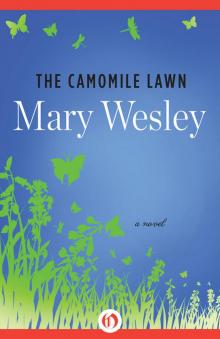 Camomile Lawn
Camomile Lawn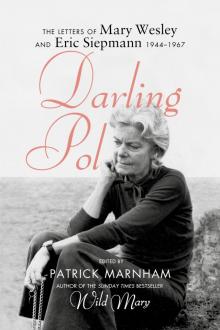 Darling Pol
Darling Pol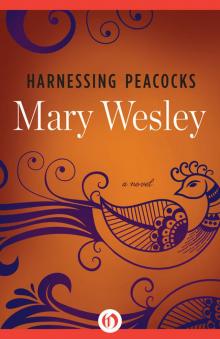 Harnessing Peacocks
Harnessing Peacocks